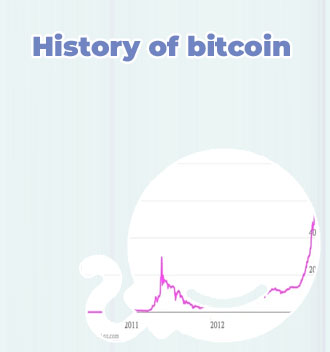Bitcoin usd

Bitcoin has become a popular form of digital currency, with its value often measured in USD. Understanding the dynamics between Bitcoin and USD is crucial for anyone looking to invest or trade in cryptocurrencies. To help shed light on this topic, here are four articles that provide valuable insights into Bitcoin USD:
The Impact of USD Inflation on Bitcoin Prices

In recent years, the relationship between USD inflation and Bitcoin prices has become a topic of increasing interest and debate among economists, investors, and cryptocurrency enthusiasts. As the US dollar continues to experience inflationary pressures, many are turning to Bitcoin as a potential hedge against the erosion of the purchasing power of traditional fiat currencies.
One of the key ways in which USD inflation impacts Bitcoin prices is through the concept of store of value. As the value of the US dollar decreases due to inflation, investors may seek alternative assets, such as Bitcoin, which are perceived to hold their value more effectively over time. This increased demand for Bitcoin can lead to higher prices in the cryptocurrency market.
Additionally, USD inflation can also affect Bitcoin prices through its impact on investor sentiment and risk appetite. In times of high inflation, investors may be more inclined to allocate their funds to assets that are not subject to the same inflationary pressures, such as Bitcoin. This shift in investment behavior can contribute to price volatility in the cryptocurrency market.
Overall, the relationship between USD inflation and Bitcoin prices is complex and multifaceted. For investors looking to diversify their portfolios and protect against the risks of inflation, understanding this relationship is crucial. By staying informed about the impact of USD inflation on Bitcoin prices, investors can make more informed decisions
Strategies for Trading Bitcoin Against USD
Today, we are going to discuss some effective strategies for trading Bitcoin against USD. Joining us is an experienced trader who has been navigating the volatile cryptocurrency market for years.
"Hello, thank you for having me. When it comes to trading Bitcoin against USD, it's crucial to stay informed about market trends and news. Keeping a close eye on both technical analysis and fundamental factors can help traders make informed decisions. Additionally, setting stop-loss orders can help mitigate potential losses in case of unexpected market movements."
The trader also emphasizes the importance of diversification in a trading portfolio. "It's important not to put all your eggs in one basket. Diversifying your investments across different cryptocurrencies and traditional assets can help spread out risk and increase potential returns."
Furthermore, the trader suggests using leverage cautiously. "While leverage can amplify gains, it can also lead to significant losses if not used properly. It's essential to understand the risks involved and use leverage responsibly."
In conclusion, having a well-thought-out trading strategy, staying informed, diversifying investments, and using leverage cautiously are all key components of successfully trading Bitcoin against USD.
This article is important for those who are looking to enhance their trading skills in the cryptocurrency market. By following these strategies, traders can navigate the market with more confidence
Analyzing Historical Trends in Bitcoin-USD Exchange Rates
Bitcoin has become a popular topic of discussion in the financial world, with many investors seeking to understand its historical trends in exchange rates. The volatile nature of Bitcoin-USD exchange rates has made it a fascinating subject for analysis.
One key trend that has emerged over the years is the overall upward trajectory of Bitcoin's value against the US dollar. Despite periodic fluctuations and market corrections, Bitcoin has shown an impressive growth pattern since its inception in 2009. This trend has been driven by factors such as increased adoption, scarcity, and speculation.
Another interesting trend to note is the correlation between Bitcoin's price movements and external events. For example, geopolitical tensions, regulatory developments, and macroeconomic indicators have all had an impact on Bitcoin-USD exchange rates. This highlights the interconnectedness of the cryptocurrency market with the broader financial landscape.
To better understand the dynamics of Bitcoin-USD exchange rates, it is important to consider factors such as trading volume, market liquidity, and investor sentiment. These variables can provide valuable insights into the underlying forces driving price movements.
In conclusion, analyzing historical trends in Bitcoin-USD exchange rates can offer valuable insights for investors and researchers alike. By considering key factors and parameters, one can gain a deeper understanding of the complex dynamics at play in the cryptocurrency market.
The Role of USD Stablecoins in the Bitcoin Ecosystem
Stablecoins pegged to the USD have emerged as a crucial component in the Bitcoin ecosystem, providing stability and liquidity to traders and investors. These digital assets are designed to maintain a 1:1 ratio with the US dollar, offering a reliable store of value amidst the price volatility of cryptocurrencies like Bitcoin. By leveraging the stability of the USD, stablecoins facilitate seamless transactions and serve as a bridge between traditional fiat currencies and digital assets.
One of the key roles of USD stablecoins in the Bitcoin ecosystem is facilitating arbitrage opportunities across different exchanges. Traders can quickly move funds between platforms using stablecoins, taking advantage of price discrepancies to generate profits. Additionally, stablecoins provide a safe haven during market downturns, allowing investors to preserve their capital without having to convert back to fiat currencies.
Furthermore, USD stablecoins play a vital role in decentralized finance (DeFi) applications, enabling users to access lending, borrowing, and yield farming services with ease. These digital assets serve as a reliable medium of exchange within DeFi protocols, enhancing the efficiency and accessibility of decentralized financial services. Overall, USD stablecoins have become an essential tool for navigating the evolving landscape of the Bitcoin ecosystem, offering stability, liquidity, and interoperability.
Key points to consider:
- Stability and liquidity:
Our Network
- Popular cryptocurrency
- Buy cryptocurency
- Will crypto bounce back
- Crypto pc
- Buy eth with btc
- Ethusd price
- How to buy dogecoin stock on coinbase
- Ethereum crypto
- Where to buy crypto
- Crypto earn
- Why buy bitcoin
- Hex crypto price
- Will ethereum ever reach $10 000 in price
- One usd crypto
- Buy bitcoin cash
- Surge crypto
- Lucky block crypto
- Cryptocom cards
- How many btc are there
- Buy sand crypto
- Bitcoin trend
- Icp cryptocurrency
- Etc crypto
- Where to buy bitcoin
- Crypto number
- Buy crypto with credit card
- Crypto com referral
- Cryptocurrency bitcoin price
- Largest bitcoin holders
- Btc live price
- Crypto predictions
- How to withdraw money from cryptocom
- How to use crypto
- Cryptocurrency exchanges
- Weth crypto
- Cryptocom headquarters
- Mbtc to usd converter
- Btc value usd
- Apps cryptocurrency
- How much is 1eth
- How much is bitcoin
- Doge crypto
- The price of bitcoin today
- Best way to buy crypto
- Crypto com exchange usa
- Ada crypto price
- Lightcoin price usd
- Cryptocom login
- Cryptos
- Btc to dollar
- Crypto com wikipedia